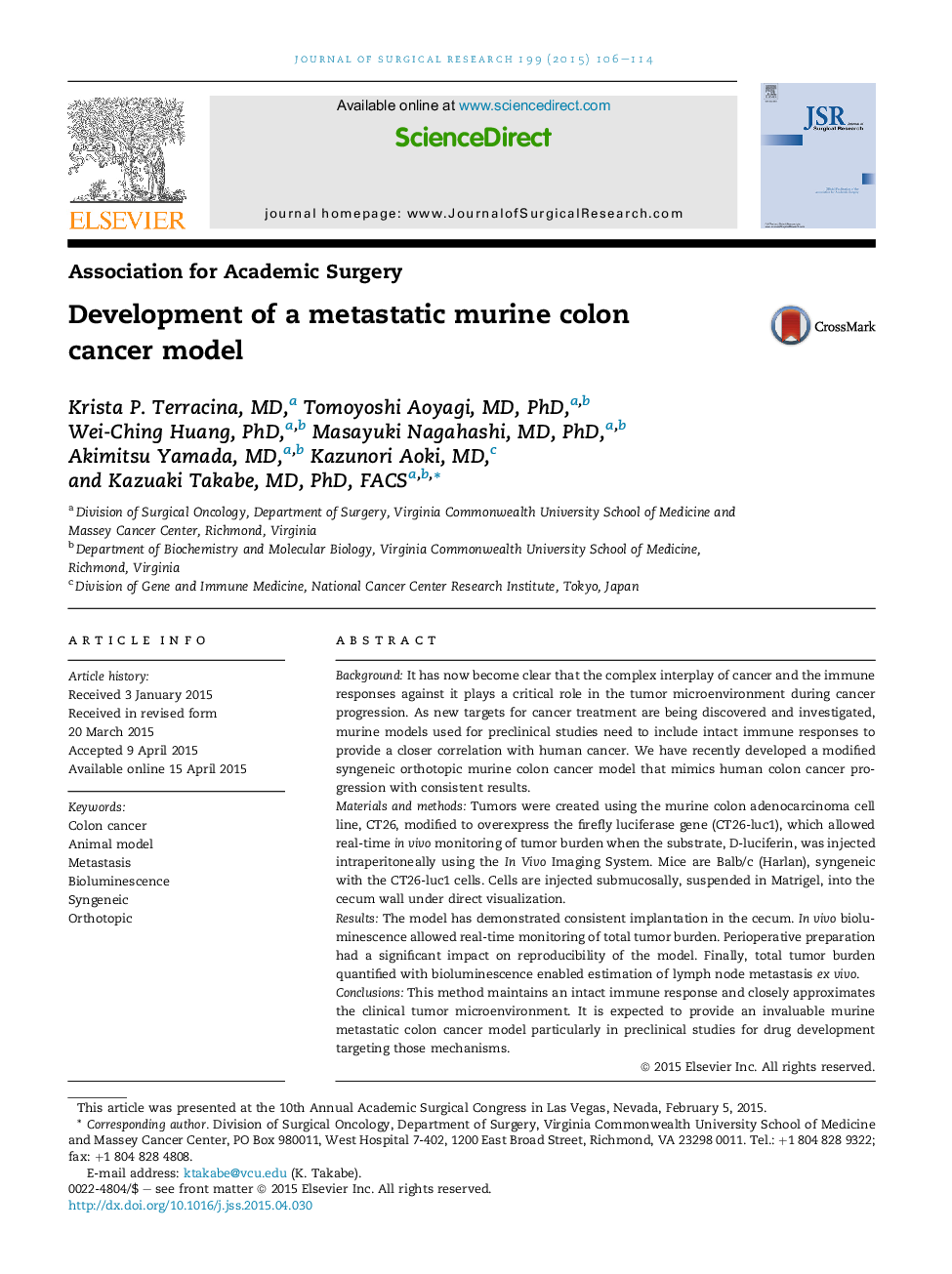| Article ID | Journal | Published Year | Pages | File Type |
|---|---|---|---|---|
| 4299600 | Journal of Surgical Research | 2015 | 9 Pages |
BackgroundIt has now become clear that the complex interplay of cancer and the immune responses against it plays a critical role in the tumor microenvironment during cancer progression. As new targets for cancer treatment are being discovered and investigated, murine models used for preclinical studies need to include intact immune responses to provide a closer correlation with human cancer. We have recently developed a modified syngeneic orthotopic murine colon cancer model that mimics human colon cancer progression with consistent results.Materials and methodsTumors were created using the murine colon adenocarcinoma cell line, CT26, modified to overexpress the firefly luciferase gene (CT26-luc1), which allowed real-time in vivo monitoring of tumor burden when the substrate, D-luciferin, was injected intraperitoneally using the In Vivo Imaging System. Mice are Balb/c (Harlan), syngeneic with the CT26-luc1 cells. Cells are injected submucosally, suspended in Matrigel, into the cecum wall under direct visualization.ResultsThe model has demonstrated consistent implantation in the cecum. In vivo bioluminescence allowed real-time monitoring of total tumor burden. Perioperative preparation had a significant impact on reproducibility of the model. Finally, total tumor burden quantified with bioluminescence enabled estimation of lymph node metastasis ex vivo.ConclusionsThis method maintains an intact immune response and closely approximates the clinical tumor microenvironment. It is expected to provide an invaluable murine metastatic colon cancer model particularly in preclinical studies for drug development targeting those mechanisms.
